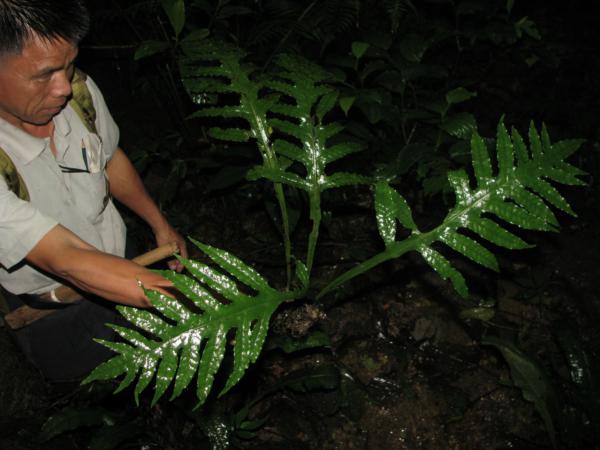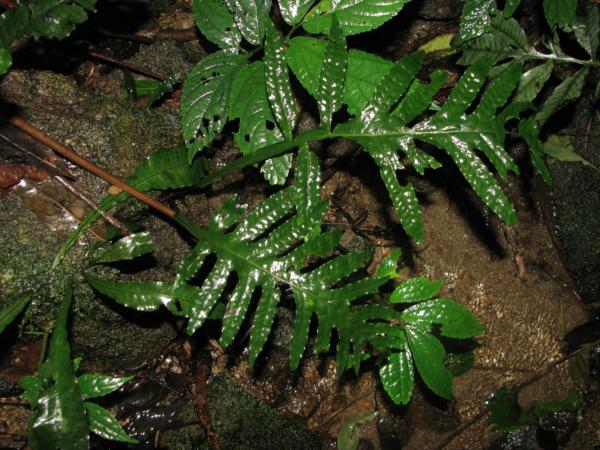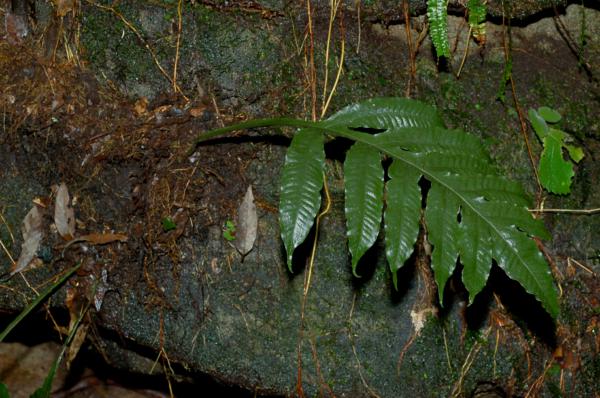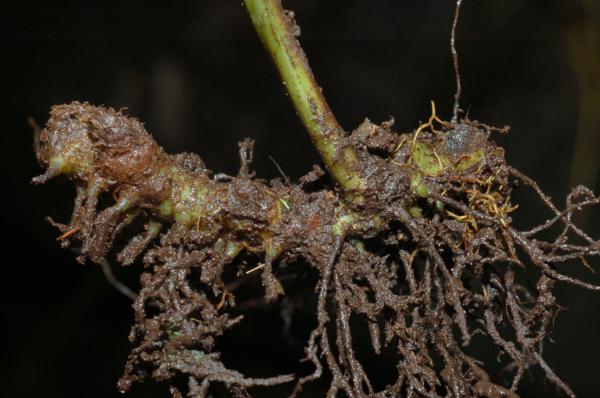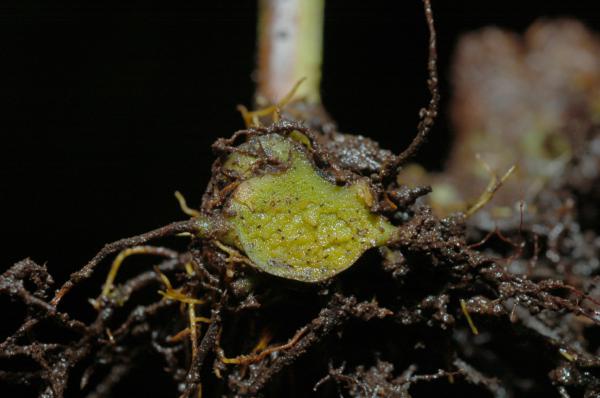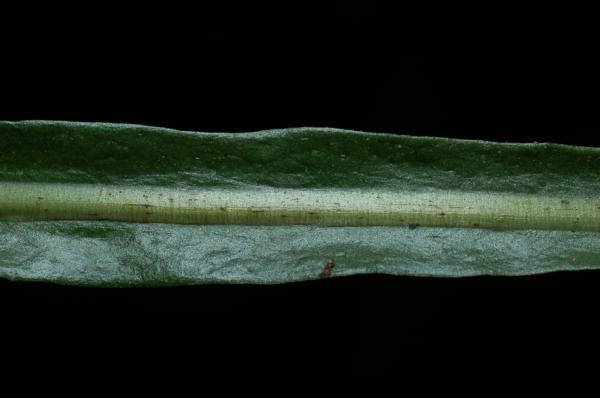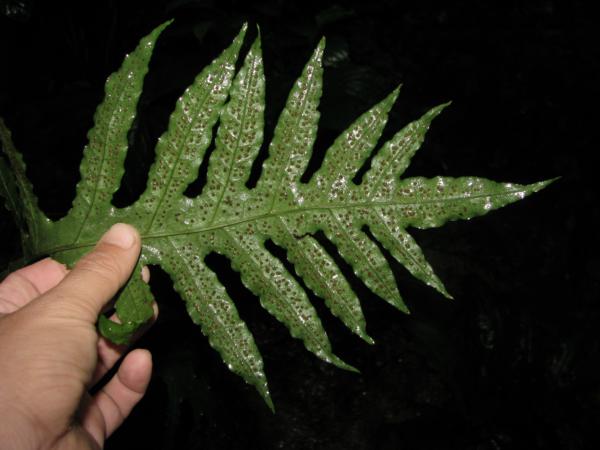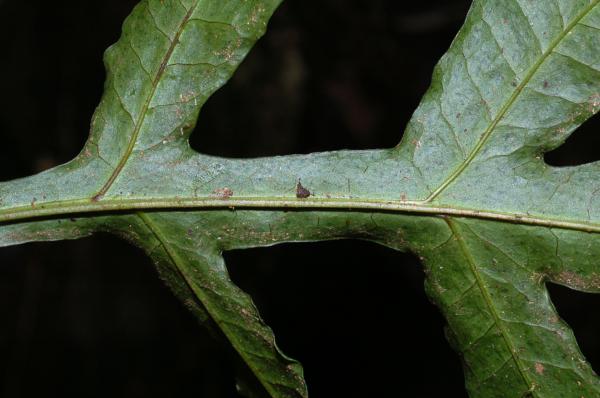
Microsorum insigne (Blume) Copel.
Family
Polypodiaceae
Nomenclature
Microsorum insigne (Blume) Copel., Univ. Calif. Publ. Bot. 16: 112. 1929; Nooteboom, Blumea 42: 329. 1997; Bosman et al., Fl. Males., Ser. II, Ferns and Fern Allies 3: 110. 1998; Boonkerd et al., Thai For. Bull. (Bot.) 32: 9. 2004. – Polypodium insigne Blume, Enum. Pl. Javae: 127. 1828. – Pleopeltis insigne (Blume) Bedd., Ferns Brit. India: t. 214. 1866. – Colysis insigne (Blume) J.Sm., Hist. Fil.: 101. 1875. – Leptochilus insignis (Blume) Fraser-Jenk., Taxon. Revis. Indian Subcontinental Pteridophytes 62. 2008. – Type: Zippelius s.n. (L), Java.
Microsorum dilatatum (Bedd.) Sledge, Bull. Brit. Mus. (Nat. Hist.) Bot. 2: 143. 1960; Tagawa & K.Iwats., SouthE. Asian Stud. 5: 53. 1967; Tagawa & K.Iwats., Fl. Thailand 3: 530. 1989; Boonkerd & Pollawatn, Pterid. Thailand: 279. 2000. – Pleopeltis dilatata Bedd., Ferns Brit. India: t. 122. 1866; Bedd., Handb. Ferns Brit. India: 367, f. 209. 1883, based on Polypodium dilatatum Wall. ex Hook., Sp. Fil. 5: 85. 1863, non Hoffm. 1796.
Microsorum hancockii (Baker) Ching, Bull. Fan Mem. Inst. Biol. 4: 309. 1933; Tardieu & C.Chr., Fl. Indo-Chine 7(2): 485. 1941; Holttum, Rev. Fl. Malaya ed. 1, 2:174, f. 82.1955 [‘1954’].
Description
Rhizome creeping, thick, 2–11 mm diam., dark, bearing closely spaced fronds, scaly; scales oblong-subtriangular, gradually narrowing towards long-acuminate apex, round at base, margin entire to dentate, 2–7.5 by 0.5–3 mm, brown to dark brown, finely to strongly clathrate, decaying from outside, round to oblong-ovate on older rhizome. Stipes (i.e. the portion below the first lobe) up to 85 cm long, distinctly winged nearly to the base, scaly at base. Laminae simple to pinnatifid with up to 14 pairs of lateral lobes and winged rachis, 2.5–110 by 0.5–55 cm, the lower lateral lobes adnate at base, oblong to narrowly oblong-lanceolate, caudate at apex, entire, up to 27 by 5.5 cm, the upper ones gradually becoming smaller, the terminal lobes oblong, gradually narrowing towards apex, undulate at margin, those of pinnate large fronds smaller; rachis and midrib raised, main lateral veins distinct, the other veins visible, copiously anastomosing; papyraceous, light green. Sori round, smaller, irregularly scattered on the lower surface, about 1.5 mm diam. at maturity.
Distribution in Thailand
NORTHERN: Mae Hong Son, Chiang Mai, Chiang Rai, Phrae, Phitsanulok; NORTH-EASTERN: Loei; SOUTH-WESTERN: Phetchaburi; SOUTH-EASTERN: Chanthaburi; PENINSULAR: Nakhon Si Thammarat, Yala.
Wider Distribution
Himalayas to Indochina, Taiwan, Japan and throughout W Malesia.
Ecology
On muddy rocks usually near streams in deep shade at low to medium altitudes.
Proposed IUCN Conservation Assessment
Least Concern (LC). This species is widespread and not under any known threat.
Notes
It is rather difficult to distinguish M. dilatatum s. str. in Sri Lanka and Himalayas to Peninsular Malaysia and Indochina from M. hancockii in China and southern edge of Japan to Taiwan, for in Thailand there are transitional forms from simple to hastate form to nearly pinnate form. Further study is highly necessary to investigate the status of specific difference for these two species .
Voucher specimens - Thailand
Middleton et al. 5045, Chiang Mai, Doi Pha Hom Pok National Park (E); Middleton et al. 5146, Loei, Phu Luang Wildlife Sanctuary (E).
Habit
Habit
Habit
Rhizome
Cross section of rhizome
Winged stipe
Lower surface of frond with sori
Winged rachis
Site hosted by the Royal Botanic Garden Edinburgh. Content managed by Stuart Lindsay, Gardens by the Bay, Singapore and David Middleton, Singapore Botanic Gardens. Last updated 24 January 2012
